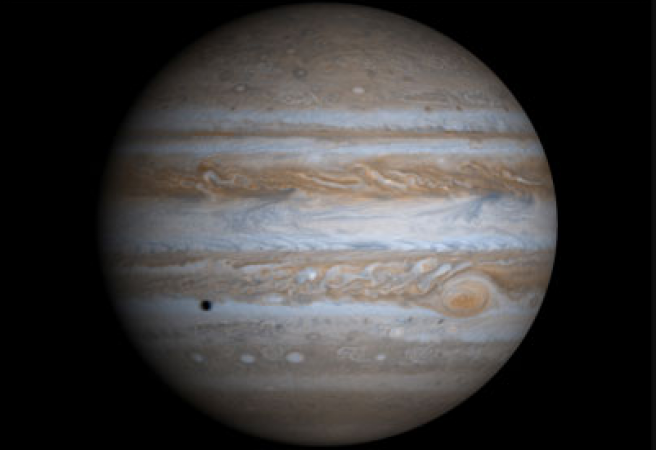
United States: The James Webb Telescope has captured some of the most detailed images of objects beyond the Milky Way, but its most recent images have focused on Jupiter, the planet that rules our solar system.
The images were captured by the telescope's near-infrared camera, which has three infrared filters that "show details of the planet" that are invisible to the human eye. NASA released the photos on Monday.
A series of photos taken of Jupiter against the blackness of space form the first image to be made public. Red and orange flashes above and below the planet indicate auroras at the north and south poles, along with swirls of green and yellow haze. According to NASA, much of the planet has shades of blue that indicate light is reflected from a dark core cloud.
Especially striking is a wide-field image displaying the planet's faint rings and two small moons against a sparkling background of galaxies.
We've never seen Jupiter like this. Imke de Pater, a planetary astronomer at the University of California, Berkeley, who helped lead the observations, said it was all "quite unbelievable".
To be completely honest, we really didn't expect it to be this good," she continued in a statement.
According to the US-French research team, the infrared images were artificially tinted blue, white, green, yellow and orange to highlight the features.
Jupiter's infamous Great Red Spot can also be seen. The storm is white because the clouds are reflecting too much sunlight; Its diameter is larger than that of Earth and it can generate winds of more than 400 miles per hour.
According to Heidi Hamel, Webb Interdisciplinary Scientist for Observation of the Solar System and vice president of science at the Association of Universities for Research in Astronomy, many bright white "spots" and "ridges" are most likely clouds with very high altitudes. are above. Condensed convective storm.
According to NASA, the second image provides a wider view of the planet, highlighting Jupiter's rings, which are "a million times fainter than the planet." The planets with rings in our solar system are Jupiter, Saturn and Uranus.
At least two of the planet's 79 moons, Amalthea and Adrastia, are visible as small glasses in the image. Other galaxies are probably fuzzy places in the distance.
According to NASA, these photos will help scientists learn more about the inner life of Jupiter. According to NASA, this planet is larger than all the other planets in our solar system and has a very low temperature of -100 degrees Fahrenheit.
Imke de Pater, professor emerita at the University of California, Berkeley, who helped lead the observations of the planet at NASA, said, "We really didn't expect it to be this good, to be honest. The fact is, We can see the details of Jupiter, its rings, small satellites and even galaxies in one image which are really amazing.
The $10 billion successor to the Hubble Space Telescope, launched by NASA and the European Space Agency, has been observing the universe in the infrared since the summer. With Webb, astronomers hope to see the beginning of the universe, 13.7 billion years ago, when the first stars and galaxies were forming.
One million miles (1.6 million kilometers) separate the observatory from Earth.
NASA has given the planned August 29th Artemis I moon mission the "go-ahead"
Chinese new heat-seeking radar with a 300 km range improves anti-stealth technology
US May Default on External Debt as Printing Press is in Overdrive